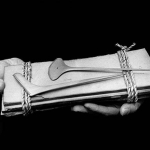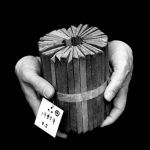Combs
Jusan-Ya
Wooden combs in Japan were once believed to have shamanic qualities. Women would brush their black hair thinking that the combs would gather each strand’s spiritual energy. In later years they became used to create elaborate hairdos for the geiko and kabuki actors of traditional Japanese entertainment scenes. Today the combs are acknowledged as a traditional craft and appreciated for their function as everyday cosmetic tools. Jusan-Ya is renowned for their high-quality versions. Family-run since 1875, Jusan-Ya continues to handcraft combs in the original methods of the Nara period at their Kyoto based workshop.
Jusan-Ya uses comb making techniques that originated in the Nara period.
Several years ago I had the good fortune to visit the creator of these fine combs in his studio.
True to tradition, the combs are all made from boxwood that is prepared by Jusan-Ya themselves – one of a few comb workshops that in every respect has established a full in-house manufacturing process which begins with growing the trees and finally to polishing each comb tooth entirely by hand. The premium boxwood by Jusan-Ya is planted in the South of Japan. Each tree is ready after about 30 years once it has reached a suitable diameter of 22cm. After they are harvested, the lengthy preparation process of the wood begins. The timber is gathered, cut in boards and fumigated. It is then smoked for another ten years in sawdust to ensure that they are dry and of a suitable hardness that will help prevent warping.
A formally trained comb maker named Jisakichi Takeuchi founded Jusan-Ya in 1875. His traditions were passed down over the years and today it is run by the company’s fifth generation owner, Shinichi Takeuchi. Jisakichi originally based the company in Osaka but when combs began to popularize in Kyoto in the Gion district, he re-located there to take advantage of the districts many geiko who used Tsuge Gushi (traditional boxwood combs) on a daily basis for their elaborate hairstyles.
http://www.porta.co.jp/shop/souvenir/7320/
http://www.nytimes.com/1986/11/23/travel/shopper-s-world-japanese-combs-crafted-from-history.html
More: https://nalatanalata.com/journal/a-closer-look-at-boxwood-combs-by-jusan-ya/
Nijusan-ya
The store has been in its present location on Shijo-dori, Kyoto’s Fifth Avenue, for more than 70 years, and combs themselves have an ancient history in Japan. Combs apparently made of bamboo are depicted on ancient clay tomb figures of the Jomon Period (up to 200 B.C.), and a huge comb 1,200 years old, excavated from a palace site in Nara, the first permanent capital of Japan, is very similar to the shop’s old signboard – a bowed comb a foot long.
Every Japanese boxwood comb at Nijusanya is made by hand, each tooth hand carved, requiring great skill to make the teeth straight and give them a smooth finish that will not damage the hair. Mr. Kakie was himself a comb maker for decades until the proprietor of Nijusanya promoted him to manager. He made the bamboo combs (now rarely made and no longer sold by Niju-sanya) called togushi, consisting of two, back-to-back rows of dozens of extremely fine teeth. Togushi were used for cleaning the hair between infrequent washings, the fine teeth drawing grease and dust from the hair. The shop once specialized in togushi, the three syllables of which mean 10 (ju), 9 (ku) and 4 (shi), totaling 23, or in Japanese, nijusan; the suffix ya means a house or shop. Thus the name of the store, Nijusanya. The word for comb, kushi, is associated with misfortune because, in addition to the numerical meaning of the syllables ku and shi (9 and 4), ku also means suffering and shi means death. Possibly because of these double meanings, it is considered bad luck to give a comb as a gift unless it is accompanied by money, to compensate the recipient for the bad luck he may receive with the comb.
Few if any boxwood combs are now made in Kyoto; those sold at Nijusanya come from Kaizuka, near Osaka. There are still about 10 craftsmen there, the youngest of whom is in his 50’s and most are closer to 70, according to Mr. Kakie. But in the mid-19th century as many as 200 workshops flourished there, he said, able to support all their artisans solely by the manufacture of handmade combs. Kushi Jinja (the comb shrine) in Kaizuka attests to the great number of people once involved in this very specialized industry.
Open 10 A.M. to 8:30 P.M. and closed the third Wednesday of each month.
Kintakedo
A shop that has been in the Gion district of Kyoto since the Edo period. Their combs are known to help make hair beautiful, and they’re the official combs of the maiko in the Gion district. They use satsumatsuge wood, which is the top quality kind of Japanese boxwood.
Kazurasei Roho
This is a long-running traditional Japanese hair ornament shop near Yasaka Jinja Shrine. Besides their main business, they also run an antique gallery. The collection consists of items assembled by their previous owner, including both Western and Oriental antiques. The present owner, Shigeo Shimofuri, who is also an antique collector and connoisseur, opened this gallery in 2000.
In the display shines excellent antique glassware Shimofuri collected from around the world over a number of years that includes Baccarat, Gallé, Daum as well as ceramic works from Europe such as Meissen. Furniture from the Qing dynasty period of China (17-20th century), and small articles from Asian countries also entertain the antique fans. You will be able to discover a unique combination of Western and Orient antiques.



